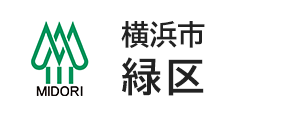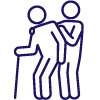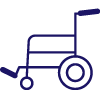現在位置
- Yokohama-shi Top Page
- Midori Ward Top Page
- Disaster Prevention and anti-crime program
- Disaster Prevention and Disasters
- Prepare for heavy rains and typhoons
Last updated on August 19, 2021.
The text is from here.
Prepare for heavy rains and typhoons
1.Daily preparation-Preparation in case of emergency
Let's check the situation around hazard map!
・Make sure there are no cliffs near your home (hazard map landslide)
・Make sure that there is no risk of flooding near your home. (Inundated hazard map)
・Let's check the evacuation route from home to refuge on a map.
・Going to evacuation sites is not the only evacuation action. Consider evacuation behavior and evacuation sites in advance, such as keeping safe relatives, friends' homes and hotels in evacuation sites.
[Be careful when thinking about evacuation route]
・Check multiple evacuation routes so that you can evacuate to two or more evacuation centers.
・Avoid roads that could be flooded by heavy rain or closed by landslide.
Let's check the items to be taken out during evacuation!
・Prepare items to be taken out during evacuation on a daily basis so that you can take them out immediately.
・Let's keep the items to the minimum necessary. (Radio, drinking water, flashlights, pharmaceuticals, baby supplies, etc.)
・Prepare masks, alcohol, thermometers, etc. as a countermeasure against infectious diseases.
Let's work together to protect our town!
・In the event of an emergency, cherish your relationship with your neighbors on a daily basis so that you can help each other.
・Create a system that can cooperate in the community in order to protect the safety of people who are difficult to respond flexibly, such as evacuation behavior in the event of a disaster due to disability or elderly people.
・Let's talk about the cooperation system in the event of a disaster with nearby social welfare facilities in the community on a daily basis.
・disaster drill, evacuation drill, and lectures will be held to acquire knowledge about disaster prevention.
・If evacuation warning or the like comes out, call out to the neighborhood and take the initiative in evacuating.
Let's register for disaster prevention information e-mail!
・disaster prevention information is provided to the e-mail addresses of registered PCs and mobile phones.
You can register from the link below.
http://www.city.yokohama.lg.jp/somu/org/kikikanri/email/
2.When it rains~ Let's be careful about this point
Let's try to collect information frequently on your own!
Please check the information frequently on the Japan Meteorological Agency website and the Yokohama City website.
・Japan Meteorological Agency website (weather information) (outside site)
・Yokohama-shi disaster prevention information
Be especially careful if you receive earth and sand disaster warning information.
Click here for landslide alert information (Japan Meteorological Agency website) (outside site)
Let's be careful about the condition of the cliff!
A phenomenon of a landslide
・Pebbles fall from the cliff.
・New spring water is generated on the slope.
・The spring water is muddy.
・There is a crack on the slope.
If there is such a precursory phenomenon, take evacuation action as soon as possible.
In addition, there may be no time from the occurrence of a precursory phenomenon to the occurrence of a landslide, or there may be no precursory phenomenon and a landslide may occur.
If you feel danger, take early evacuation actions.
Let's try to evacuate safely without overdoing it!
When evacuating, wear comfortable clothes and try to act with two or more people.
If the surroundings are dark and the flooding has already begun, do not force yourself to go out and stay in a high place where you can secure safety, such as the second floor of your home.
Let's evacuate on a safe route!
・At the time of evacuation, avoid roads along rivers and cliffs and underground roads.
・Heavy rain may cause gutters and manholes on the road to come off, so be careful not to approach them.
3.When evacuation information comes out: Evacuation actions to save lives
evacuation information
| evacuation information | Estimated announcement | Your actions |
|---|---|---|
Alert level 3 | [River flooding] | If you need time to evacuate, such as the elderly, children, people with disabilities, or people with illness, please start evacuation voluntarily as soon as possible. |
Alert level 4 | [River flooding] | Start evacuation at evacuation sites and other places. |
Alert level 5 | [River flooding] | Please evacuate to evacuation sites immediately and evacuate. |
Information gathering
In Yokohama City, when communicating evacuation warning, etc. to citizens, the following means are used.
・disaster prevention information E-mail
We provide disaster prevention information to e-mails on registered PCs and mobile phones.
You can register from the link below.
http://www.city.yokohama.lg.jp/somu/org/kikikanri/email/
・Provision of information via "Emergency Bulletin Mail"
Information will be delivered to mobile phones that support emergency bulletin emails in the target area. Please check below if your mobile phone is compatible.
http://www.city.yokohama.lg.jp/somu/org/kikikanri/kinkyumail/
・Information provision via the “Homepage”
evacuation warning and others will be distributed through the Midori Ward website.
・Information provision by public relations vehicles, etc.
Depending on the situation, we will carry out calls by public relations vehicles and fire trucks.
voluntary evacuation
As for landslide, there are many cases where there is no time to spare from precursors to collapse, so if you find unusual precursors, please start voluntary evacuation immediately without waiting for evacuation warning.
Based on the lessons learned from Typhoon No. 18 in October 2014, Yokohama City decided to extract cliffs that could cause significant damage to houses in the event of a landslide, and to issue the evacuation warning along with the announcement of the landslide alert information.
It does not mean that the area where evacuation warning has not been issued is safe. In the event of a heavy rain or typhoon, be aware of the disaster prevention information and take evacuation actions at your own discretion.
Areas subject to evacuation warning and selection criteria are as follows:
◇List of target areas (list of text format and map)
◇Target area (ArcGIS Online) (external site)
The target area map may be difficult to browse, such as when a large number of access is concentrated.
If you are unable to browse, please contact the Midori Ward Office General Affairs Division below for more information about the area within Midori Ward.
◇Selection criteria for the target area
| Contents | Department name | TEL | E-mail address |
|---|---|---|---|
Details of areas subject to evacuation warning | Midori Ward Office General Affairs Division | 045‐930‐2208 | |
To evacuation warning, etc. | General Affairs Bureau Emergency Response Division | 045-671-2064 (Weekdays from 9:00 to 17:00) | |
Thing about field investigation of cliff ground | Housing and Architecture Bureau Building Disaster Prevention Section | 045-671-2948 |
Inquiries to this page
Midori Ward General Affairs Department General Affairs Division
Phone: 045-930-2208
Phone: 045-930-2208
Fax: 045-930-2209
E-Mail address md-somu@city.yokohama.lg.jp
Page ID: 430-295-156












